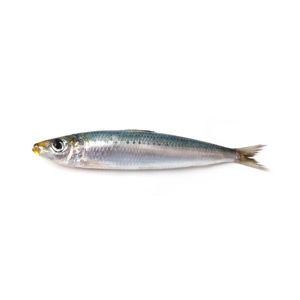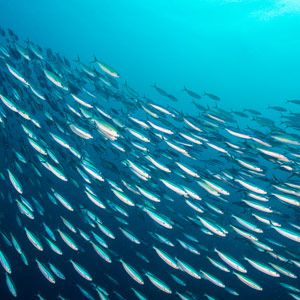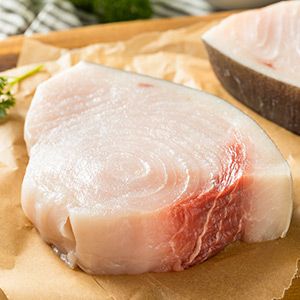Sardines: This Oily Fish Can Be Your Pet’s Next Favorite Treat
Served properly and obtained from the right sources, this oily saltwater fish contains healthy fats that can help boost your pet’s health, while being a scrumptious snack.

STORY AT-A-GLANCE
- Sardines are small saltwater fish that have been enjoyed by humans for centuries, which your pet can eat as well
- Research has shown that saltwater fish contains EPA and DHA omega-3 fats that may help boost your pet’s health in several ways
- Fresh, frozen sardines are available in some parts of the world. When buying canned sardines, look for those packed in water
Editor's Note: This article is a reprint. It was originally published September 16, 2022.
As small saltwater fish that thrive in different oceans around the world, sardines are a fixture in the human diet. They’re enjoyed in different ways — from simple recipes to extravagant dishes, these small, fatty fish can offer something for everyone. And that “everyone” can even include your four-legged friend at home.
If you’ve been wondering about feeding sardines to your pet, rest assured they’re one of the healthiest foods to share. They contain DHA and EPA omega-3 fats, which can benefit your pet’s health in several ways. However, there are some things you need to know before feeding your pet these fish.
Did You Know?

While the name “sardines” is accepted throughout the world, it is referred to as “pilchard” in the United Kingdom.1
Omega-3 Is the Star of Sardines
One of the main bioactive compounds of sardines is omega-3 fatty acids, including EPA and DHA. In fact, sardines are considered to be a top source of marine-based omega-3s, along with other fish such as anchovies, salmon, mackerel, trout and herring.2 The benefits of omega-3s on animal health have also been studied for quite some time now. Increasing your pet’s intake of omega-3 fats can positively affect their health in certain areas, such as:
- Managing osteoarthritis — Increased consumption of omega-3 has been shown to help manage inflammation, especially when it comes to osteoarthritic dogs. One study noted that test dogs who consumed omega-3 had significant improvement in locomotor disability and performance of daily activities.3
- Boosting skin health — Omega-3 fatty acids may help improve skin in dogs, according to a 1994 study. Researchers gave 16 dogs omega-3 fatty acids that included high levels of EPA. Results showed that the dogs experienced improvement in itchiness, self-trauma, coat character and hair loss compared with administration of ALA (alpha linoleic acid) alone.4
- Improving cardiac function — Researchers discovered that upping omega-3 intake may help reduce the production of inflammatory cytokines, as well as help reduce muscle loss in dogs diagnosed with dilated cardiomyopathy.5
- Helping improve growth in newborn puppies — If you’ve been fostering newborn puppies or will be doing so anytime soon, a little bit of omega-3 in their diet may do wonders for them. A 2012 study noted that the fatty acid provided a wide range of health benefits in cognitive, memory, psychomotor, immunologic and retinal function in 48 healthy, newly weaned, 8-week-old Beagle puppies.6
Other Nutrients in Sardines
Aside from omega-3 fatty acids, sardines contain some amounts of vitamin B12 and D and selenium, all of which may support your pet. Vitamin B12, also known as cobalamin, acts as a cofactor for many enzymatic processes in both humans and animals, such as gastrointestinal function, nucleic acid synthesis and amino acid metabolism. In addition, animals can’t synthesize their own vitamin B12, making it a necessary addition to your pet’s diet every now and then.7
Meanwhile, sufficient intake of vitamin D through diet is required by dogs and cats because they cannot produce their own through sun exposure. Vitamin D has been shown to play a role in bone metabolism.8 In the case of selenium, it has been found to play an antioxidant function in dogs, as well as proper thyroid metabolism and reproductive health.9 Sardines provide an excellent source of bioavailable vitamin D.
Fun Fact About Sardines

The name “sardines” references the island of Sardinia in Italy, where this particular fish was once abundant.10
How to Serve Sardines to Your Pet
The best way to feed sardines to your pet is raw, although the fish can also be dehydrated to help increase shelf life while still retaining all its healthy nutrients. Furthermore, sardines, as well as other treats, should only comprise less than 10% of your pet’s daily food intake. Anything more could lead them to overeating, which may introduce potential health problems down the line. The bulk of their nutrition should still come from a whole food, species-appropriate diet.
Now that you know important guidelines on feeding treats to your pet, you can introduce sardines to them with this easy-to-prepare recipe.
Dehydrated Sardine Crisps
Ingredients:
- 1 can of sardines packed in water
Other equipment needed:
- Parchment paper
- Food dehydrator
Procedure:
- Drain the sardines.
- Place the sardines top of parchment paper, then place the paper on top of the dehydrator try.
- Dehydrate the sardines at 155 degrees Fahrenheit (68.3 degrees Celsius) for two hours.
- Reduce temperature to 140 degrees Fahrenheit (60 degrees Celsius) for four more hours, or until sardines are thoroughly dried.
- Store in an airtight container for up to a week.
Note: The sardine crisps can stay fresh in the refrigerator for one week. When stored in the freezer, they can last up to three months.
Top Sardine Producers in the World

The most recent countries that exported the highest amount of sardines are Morocco, Japan, China, Russia and Oman.11

Choose Sustainable, Healthy Sources of Sardines
I don’t normally recommend fish as a food or treat for dogs and cats because of the issue of contaminated leftovers from the human food chain (containing high levels of dioxins and PCBs) that end up in pet food.
How does fish become contaminated? According to the Environmental Defense Fund, there are several ways wherein toxins accumulate in fish. The process starts when industrial and agricultural waste end up in oceans. Rainfall can also wash away chemicals into streams and rivers that eventually end up in large bodies of water.12
From there, the chemicals end up in the food that the fish eat, as well as their surroundings. For example, bacteria that come into contact with mercury transforms into methylmercury, which eventually end up in fish. Mercury can also accumulate in fish when it passes through their gills.13 PCBs, which are found in sediments,14 end up in the fatty layers of fish.15
Larger, predatory species of fish tend to have more time to “bioaccumulate” mercury because of their volume and age. Aside from these factors, another contributor to their bioaccumulation of mercury is because of the mercury-infected fish they consume.16
Beware of These Contaminated Fish

Due to the constant dumping of contaminants in the ocean, certain species of fish (especially larger ones) have become highly contaminated. These include shark, swordfish, king mackerel and tilefish.17
Now that you’re aware of how toxins accumulate in fish, here’s what you need to know about feeding them to your pets. Cats shouldn’t consume an excessive amount of seafood because marine-sourced proteins are the richest sources of iodine, a mineral cats need very little of because they are prone to hyperthyroidism (which is exacerbated by dietary iodine).
However, dogs prone to hypothyroidism (a low thyroid) can greatly benefit from whole foods that contain bioavailable iodine, including sardines. Feeding dogs and non-hyperthyroid cats sardines as a treat or meal topper on a regular basis is a great way to provide a rich source of vitamin D, DHA and EPA in whole-food form.
I don’t recommend feeding a base diet of fish protein to dogs or cats, unless you’re choosing specific nontoxic fish and creating a nutritionally complete homemade diet. More importantly, mercury contamination in large ocean fish is a real and serious problem, not to mention the toxic environment these fish grow in. That being said, sardines are a good choice because of their short lifespan, since they don’t live long enough to accumulate notable levels of toxins.
For a few years after the Fukushima nuclear accident in Japan, all of the fish (including sardines) harvested from that bay area had unhealthy levels of radiation contamination, but thankfully those regional sardines have since tested below detectable levels, and there are a multitude of different types of sardines found throughout the world you can choose from that are cleaner.
The Blue Zone of Sardinia

The island of Sardinia, is designated as a “blue zone.” This means that there’s a high concentration of centenarians living there, which is attributed to several factors, including the healthy diet they eat and their low-stress environment. Sardinian elders generally get more exercise as well.18
When it comes to choosing sardines, Steve Brown, a renowned expert on fresh food diets for pets, only recommends feeding fresh sardines (found locally or in the freezer section of some groceries in some parts of the world) or canned sardines packed in water or olive oil (pending no issues digesting healthy fats). Be sure to read the label carefully, as the sardines may be packed in other oils, such as soy.19
Remember Not to Solely Rely on Sardines for Proper Nutrition
While sardines contain an assortment of nutrients, most notably omega-3 fats, you shouldn’t rely on this fish solely for proper nutrition. I still encourage you to feed your pet a species-appropriate, nutritionally complete diet using raw or lightly cooked ingredients. Use sardines (one piece per 20 pounds of body weight) as a tasty yet nutritious treat or food topper that your pet will look forward to eating every now and then.

We’re celebrating bark and whisker’s Nutrition Week with an exciting giveaway! One lucky pet parent will be picked from each of our social media channels every day from January 16 to 22. To get a chance to win amazing prizes for your pet, all you have to do is follow our official Facebook, Instagram or Twitter page and check out the mechanics for each platform.
Sources and References
- 1 Britannica, “Sardine”
- 2 BioMed Research International, Volume 2022 |Article ID 3661866, Abstract
- 3 Journal of Laboratory and Clinical Medicine, March 2000, Vol. 135, No. 3, pp 275-286
- 4 Veterinary Dermatology, September 1994, Vol. 5, Iss. 3, pp 99-104
- 5 Journal of Internal Veterinary Medicine, Nov-Dec 1998, Iss. 12, No. 6, pp 440-448
- 6 Journal of the American Veterinary Medical Association, September 1, 2012, pp 583-94
- 7 MSPCA, “Cobalamin Deficiency”
- 8 Metabolites. 2020 Dec; 10(12): 496, Abstract
- 9 Animals (Basel). 2021 Feb; 11(2): 418, Abstract
- 10 New World Encyclopedia, “Sardine”
- 11 OEC, “Sardines,brisling,sprats, frozen, whole”
- 12,13,15 EDF, “Common questions about contaminants in seafood”
- 14 National Ocean Service, “What Are PCBs?”
- 16 Food Print, “So Where Does All That Mercury in Fish Come From?”
- 17 Environ Health Perspect. 2012 Jun; 120(6): 790–798, Results
- 18 NBC News, June 10, 2019
- 19 Rodney Habib, July 24, 2016











